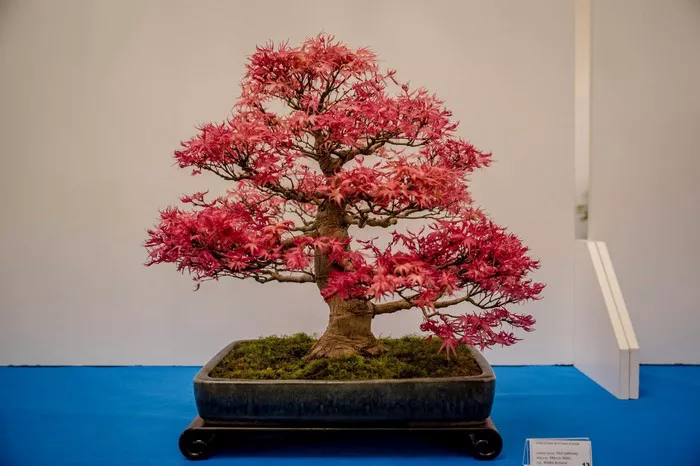Bonsai, a centuries-old art form originating from China and refined in Japan, captivates admirers worldwide with its miniature trees that exude profound symbolism and evoke a sense of tranquility. Derived from the Japanese words “bon” meaning tray and “sai” meaning planting, bonsai embodies the essence of nature, encapsulated within a small, meticulously crafted container. Beyond its aesthetic appeal, bonsai carries deep symbolic meanings, reflecting themes of resilience, balance, and harmony. In this article, we explore the rich symbolism behind bonsai trees, delve into the various types, and offer insights into their care and cultivation.
Types of Bonsai Trees
Bonsai trees come in a myriad of species, each with its unique characteristics and aesthetic appeal. Among the most popular types are:
1. Ficus Bonsai: Known for its robustness and versatility, the Ficus bonsai boasts glossy foliage and is suitable for beginners due to its forgiving nature.
2. Juniper Bonsai: With its distinctive, needle-like foliage, Juniper bonsai trees evoke a sense of rugged elegance, often symbolizing longevity and strength.
3. Maple Bonsai: Admired for its vibrant autumnal colors and delicate leaves, the Maple bonsai embodies the fleeting beauty of nature, symbolizing change and transformation.
4. Pine Bonsai: Revered for its graceful, needle-like foliage and rugged bark, the Pine bonsai exudes a sense of resilience and endurance, symbolizing wisdom and longevity.
5. Cherry Blossom Bonsai: Celebrated for its ethereal beauty and delicate pink blossoms, the Cherry Blossom bonsai symbolizes the transient nature of life and the fleeting beauty of existence.
Bonsai Tree Symbolism
The symbolism attributed to bonsai trees is deeply rooted in Eastern philosophy and cultural traditions, with each aspect of the tree imbued with profound meaning:
1. Miniaturization: The practice of miniaturizing trees in bonsai cultivation symbolizes the harmony between humanity and nature. By carefully shaping and pruning the tree, bonsai artists seek to mimic the grandeur of nature on a smaller scale, fostering a deep connection with the natural world.
2. Balance and Harmony: Bonsai trees embody the principle of yin and yang, representing the harmonious balance between opposing forces. Through meticulous pruning and shaping, bonsai artists strive to achieve a harmonious equilibrium between the tree’s branches, foliage, and roots, reflecting the balance and harmony sought in life.
3. Resilience and Perseverance: The art of bonsai requires patience, dedication, and resilience. Bonsai trees endure rigorous pruning and training to attain their desired form, symbolizing the resilience and perseverance required to overcome life’s challenges.
4. Reflection of Seasons: Bonsai trees undergo seasonal changes, with their foliage and blossoms reflecting the passage of time. This cyclical nature symbolizes the transient beauty of life and the impermanence of existence, reminding us to cherish each moment and embrace change.
5. Cultural Significance: In Japanese culture, bonsai trees hold profound cultural significance, symbolizing reverence for nature, discipline, and aesthetic refinement. Bonsai cultivation is regarded as a meditative practice, fostering introspection and spiritual growth.
How to Care for Bonsai Trees
Caring for bonsai trees requires a delicate balance of attention, skill, and patience. Here are some essential tips for nurturing these miniature masterpieces:
1. Light: Place your bonsai tree in a location with ample natural light, preferably near a window facing east or west. Rotate the tree periodically to ensure even exposure to sunlight and prevent one-sided growth.
2. Watering: Monitor the moisture levels of the soil regularly and water your bonsai tree when the soil feels slightly dry to the touch. Avoid overwatering, as it can lead to root rot, and ensure proper drainage to prevent waterlogging.
3. Pruning and Trimming: Regular pruning and trimming are essential for maintaining the shape and health of your bonsai tree. Remove any dead or overgrown branches, and trim back excessive foliage to promote balanced growth.
4. Repotting: Repot your bonsai tree every few years to refresh the soil and provide ample space for root growth. Use a well-draining bonsai soil mix and prune the roots to encourage healthy development.
5. Fertilization: Feed your bonsai tree with a balanced liquid fertilizer during the growing season to replenish essential nutrients. Adjust the frequency and strength of fertilization based on the tree’s growth rate and health.
6. Protection from Pests and Diseases: Inspect your bonsai tree regularly for signs of pests or diseases, such as aphids, scale insects, or fungal infections. Treat any infestations promptly using organic or chemical remedies to prevent further damage.
By following these care guidelines and nurturing your bonsai tree with love and attention, you can cultivate a thriving miniature masterpiece that embodies the timeless beauty and symbolism of this ancient art form.
Conclusion
Bonsai trees serve as living expressions of nature’s beauty and wisdom, encapsulating profound symbolism and cultural significance within their miniature forms. Through the art of bonsai cultivation, enthusiasts are invited to embark on a journey of introspection, patience, and appreciation for the delicate balance of life. As we tend to these miniature masterpieces with care and reverence, we honor the timeless traditions and enduring wisdom encapsulated within each bonsai tree, fostering a deeper connection with the natural world and the eternal cycle of growth and renewal.

